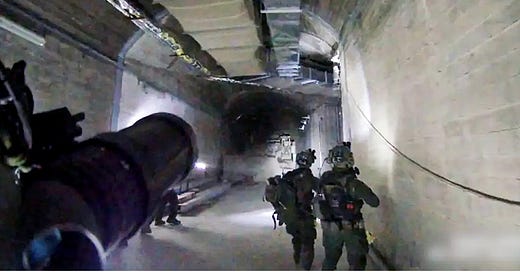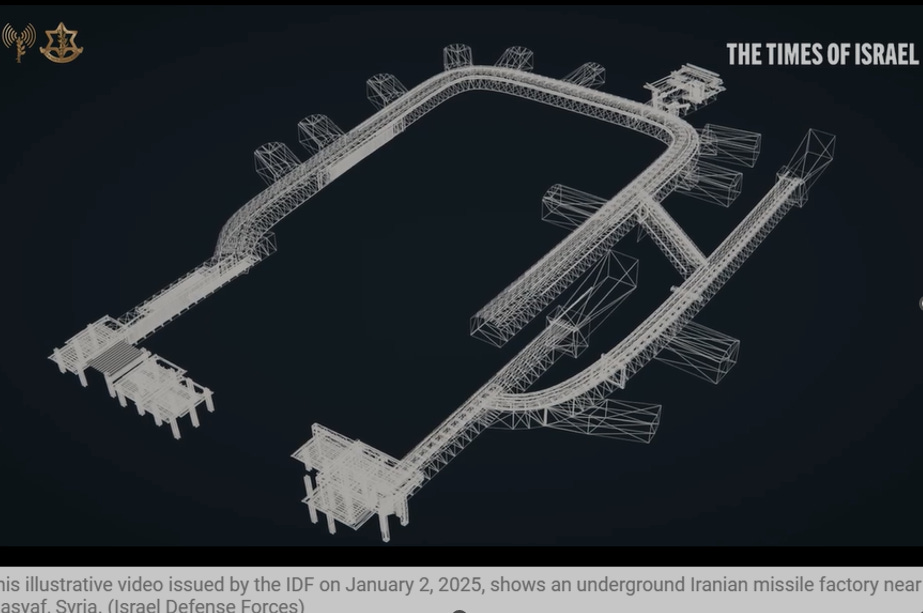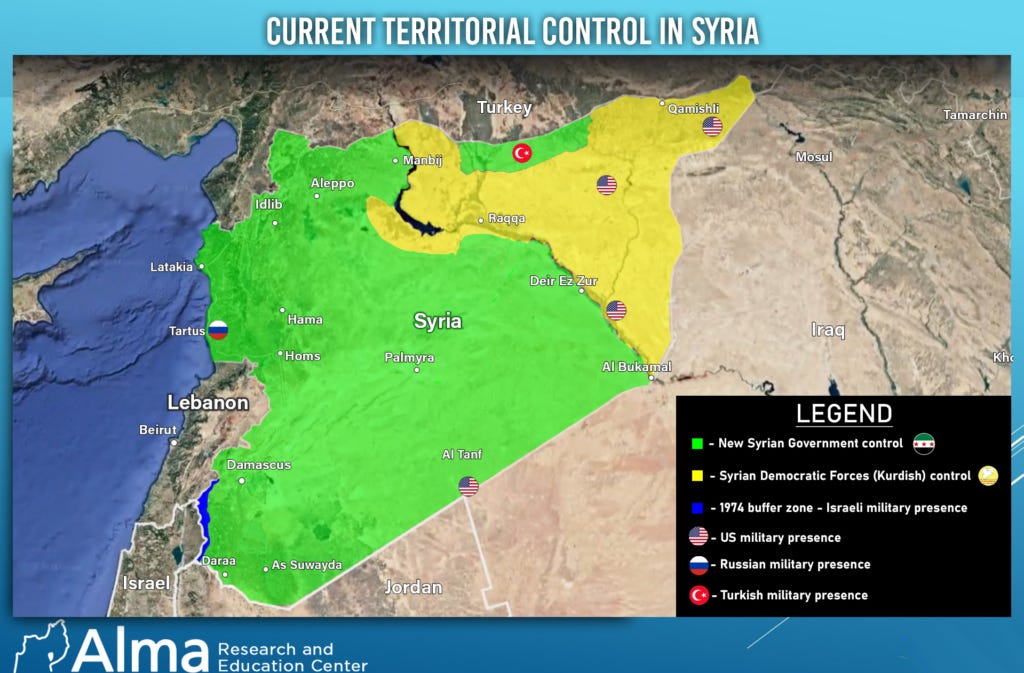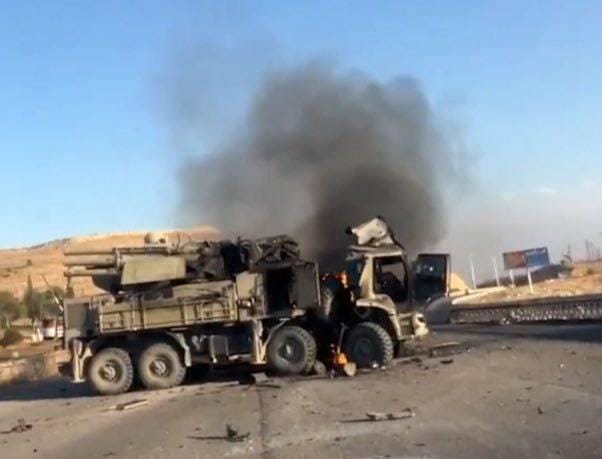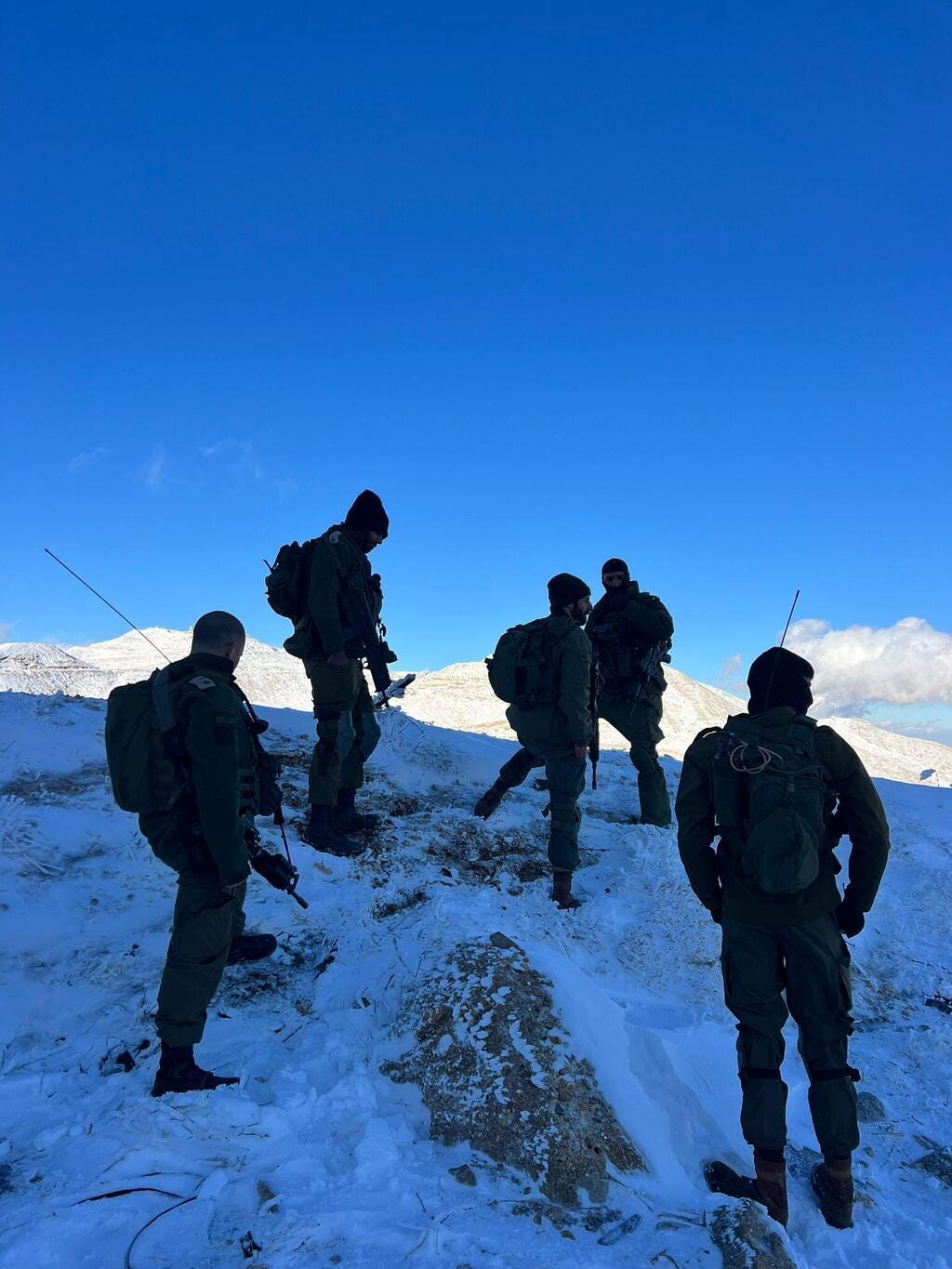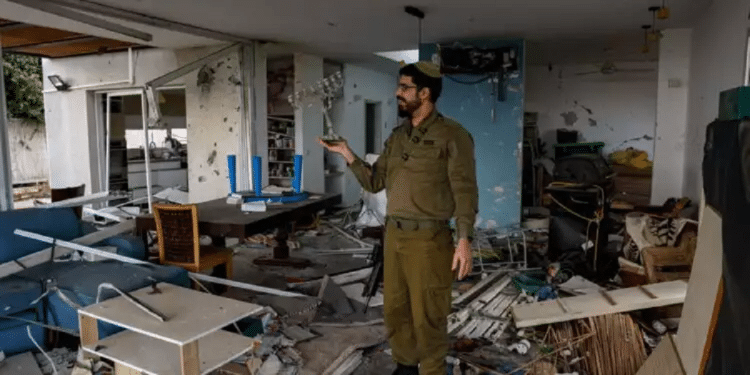Operation Many Ways—In a Storybook Operation, Israel Reached Deep Into Syria to Stymie Iran Again
January 7, 2024 - Issue #69
Thank you to all my subscribers and followers. You honor me with your presence. If you think this article of value, please share it with others. Please also consider indicating if you see value in the article by “liking” it or adding a comment. Doing so helps me determine the subject of future articles that you might find beneficial and, through social media, broadcasts my work to a wider audience.
I intended for this newsletter essay to go into detail about what I see coming in 2025 for Israel and the region. But then the IDF revealed details of a truly amazing operation it conducted several months ago. That operation proved Israel’s reach is long, its capability great, and its determination to prevail overwhelming. Therefore, rather than go into strategic detail in this issue, I think this week it is best, and most interesting, to detail what happened in a singular event during those fraught September days when Israel transitioned from defense to offense along its northern front.
For many years prior to October 7, Israel had engaged in a surgical campaign called the “War Between Wars.” Its goal was to interdict Iranian shipments of weaponry, mostly missiles, to Hezbollah in Lebanon. To get the missiles to its Lebanese proxy, Iran employed many methods—the primary one being trucking them several hundred miles from Iran through Iraq and then Syria to Lebanon. Or, alternatively, Iran flew the weapons into Syria and then moved them by truck many tens of perilous miles into Hezbollah’s eager hands in Lebanon from storage facilities set up to receive them at the airports used. Both methods offered Israel an opportunity to use its amazing intelligence capability to locate shipments while they were on the way or in storage and then by mostly employing the Israeli air force (IAF), destroying what it could. Best estimates are that Israel was 70% successful. Still, that level of destruction was not sufficient because by October 7, 2023, Hezbollah amassed 200,000 rockets, missiles and projectiles.
Nevertheless, the Iranians were not happy. To bring their Axis of Resistance plans to a head, they wanted more in Hezbollah’s hands sooner. Especially precision guided missiles and other rockets with large payloads. With enough of them, Iran thought Hezbollah could bring Israel to its knees and/or deter Israel from amping up its interference with Iran’s nuclear program. And they may have been correct. Therefore, Iran started a missile manufacturing program in Syria. By doing so, rather than moving large and easy to spot missiles on a perilous journey from Iran, they would only have to move them a few miles into Lebanon after they were produced.
But Israel was wise to that. And manufacturing plants are soft targets, rather easy to locate and put out of business. Therefore, it was not so surprising that sometime in 2016 or 2017, the IDF destroyed an Iranian rocket engine manufacturing site in Syria. Unhappy with sustaining yet another setback to their nefarious plans, the Iranians doubled down with a new idea. And in 2017, the Iranians started work on what the Israelis named, “Deep Layer,” now believed to have been Iran’s flagship project in Syria. The concept was to build an impregnable missile factory deep underground into Maysaf mountain in western Syria near the city of Hama and only two miles from Hezbollah controlled territory in Lebanon! The location picked was perfect for quickly transporting completed missiles to Hezbollah before Israel could destroy them on the move and also had the virtue of being 124 miles from Israel and 28 miles from the nearest coastline—making it tough to mount a ground operation against it. Here was an opportunity to heavily tip the scales to Hezbollah’s benefit.
Or so, the Iranians thought.
By 2021, digging was done. Iran then started bringing in manufacturing equipment and setting it up. That took much time to do, not just because of the technical issues involved and the need to thoroughly test the equipment, but also because Israel’s vigilant drones and airplanes were primed to pounce on any weapon manufacturing equipment entering Syria. But by the summer of 2024, the missile manufacturing site was good to go and already the Iranians were mass producing rocket engines there. And Israel learned that the Iranians had successfully constructed two missiles at the Deep Layer site as a test case. Soon, Israel estimated the factory there would start producing 100-300 missiles a year with ranges of 100-200 miles—sufficient for striking Tel Aviv and beyond (some with up to a half ton warhead payload capability, enough to damage a city block) and some or all of which equipped with precision guided capabilities making them able to strike within feet of targets they are aimed at —plus a plethora of smaller shorter-range missiles. Deep from within this Hades like dungeon, the Iranians thought their devilish tools would soon be pouring out.
Not surprisingly, Israeli intelligence learned of the planned manufacturing complex when the digging commenced in 2021. Recognizing the problem, the IDF looked for a viable option to destroy the facility. But frankly, in those years, the IDF had a much more kick-the-can-down-the road philosophy. And while it was more than willing to use its airpower in the War Between Wars to interfere with Iran’s supply of missiles, the IDF and Israel’s political leadership had little stomach for taking risks that might start a war with Hezbollah and/or Syria. Therefore, since any attempt to destroy Deep Layer would require an operation of such magnitude that it would entail massive military and diplomatic risks, both the generals and the political establishment were loathe to do so. That was the climate of the times in those days.
Then came October 7, and the mindset changed. Between October 7, 2023, and July 2024, Hezbollah had fired well more than 10,000 projectiles at Israel and rather than showing any signs of stopping, it was ratcheting up the attacks. With Deep Layer coming online, Iran would be able to equip Hezbollah with many more of the most dangerous missiles. Now, rather than an in the future thorn in its side, Deep Layer posed a significant present danger to Israel.
But what to do?
Air attacks with bombs Israel possessed had proved fruitless. And there was little likelihood that the US would supply Israel with the bunker buster bombs needed to do the trick out of fear that Israel might use them against Iran. That left only one other option—a ground attack. But that option carried with it many risks. How would the soldiers get there? How long would they have to accomplish their mission before Syrian and Iranian militia reinforcements arrived that might overwhelm the Israelis on the ground. What would happen if IDF soldiers got injured in the fighting. And of course, could the ground force be extricated safely? Moreover, Iran’s Axis of Resistance had stretched the IDF in many different directions. This attack would require using special forces, but Israel does not have unlimited numbers of those highly capable soldiers. Also, preparation for an operation of the magnitude required for destroying Deep Layer would take the soldiers needed to do so off the battlefield for months while they trained for the mission just when the demand for their special capabilities was at the maximum and the IDF was exhausted. Secrecy too, was an issue. Preparation and training for an attack of the nature needed for success likely required hundreds to be in the know. Would the proposed mission remain secret?
But not deterred, in the early months of 2024 the IDF accelerated work on an attack plan called Many Ways. To do that, it instituted “extensive intelligence gathering and monitoring.” And because the mission would require close coordination, the IAF, who had been given responsibility to develop and implement the plan, chose to do the job its inhouse Shaldag special forces unit, which specializes in clandestine long-range penetration raids. Joining them would be soldiers from Unit 669 that focuses on combat search and rescue. Training began in July. Complicating things was the proximity to Deep Layer of Russian bases with their long-range radar that were coupled with sophisticated anti-aircraft missiles capable of shooting down Israeli aircraft.
The mission plan agreed upon incorporated 100 special forces soldiers (most or all from Shaldag and half of them reservists honoring their nation’s call to duty), and twenty from Unit 669. This was no local operation with time-tested tactics, multiple alternative options should something unforeseen happen, and of limited risk to the men involved. Rather, this was a throw-of-the-dice, albeit a meticulously planned one. If things would go wrong, 120 men could die or be imprisoned. And although the benefit of success would be great, the cost in lives of failure would be catastrophic for the people involved, their families, and the soul of the nation. In these types of circumstances, generals offer their opinions—political leaders decide. Certainly then, Israel’s leaders asked not only about the likelihood of successful execution of the mission, including the presence of booby-traps inside the facility, but also the likelihood that all the soldiers involved would afterwards be extracted. Fortunately, the relevant decision makers had special operations experience. Chief of Staff, Herzi Halevi, was once commander of Israel’s Sayeret Matkal, a special reconnaissance unit considered one of Israel’s best special forces units. Defense Minister at the time, Yoav Gallant, was once commander of Israel’s Navy Seals. And Prime Minister Netanyahu, in his younger years, served with distinction as an officer in Sayeret Matkal.
Hearing what they needed to hear, the politicians and the Chief of Staff greenlighted the mission.
Because of the clear weather, and a variety of other factors not revealed by the IDF but definitely including Deep Valley’s operational status which would likely soon give rise to more safeguards to being put in place and many more Syrian troops stationed there to guard the facility, the mission went forward during the night of September 8. At some point, Israel informed the United States of the operation. It is not clear whether that was before or just after.
Getting There
Deep in the night of September 8, four CH-53D heavy-lift helicopters transported 120 men and several military working dogs. Two Israeli AH-64 attack helicopters escorted them. In the air over Syria, twenty-one fighter jets provided support, and fourteen reconnaissance craft ensured that Israel would know everywhere relevant about was happening on the ground and in the air. In addition, thirty more fighter jets waited on standby on the tarmac of an IAF air force base. Offshore, Israeli naval vessels stood ready to provide further assistance.
In the pitch-black skies, the helicopters flew over the Mediterranean, far from the coastline, before they veered into Syrian airspace. There, they flew very low to evade detection by the Russians from their major air base only twenty miles from the route the helicopters took and those Syrian radars and defensive systems along the way that the IAF had not yet knocked out in prior raids. Near Deep Valley and other above ground weapon factories in the area, Syria had placed an extremely dense set of aerial defensive systems, second only in size to those defending Damascus. Even though the IAF had knocked out some in prior raids, those remaining were a concern.
Once over dry land in Syria, it took the helicopters eighteen minutes to get to Deep Valley. Upon arrival, soldiers in the first helicopter roped down to the ground, very close to the facility entrances. Another helicopter left a team on a small hill nearby to provide overwatch protection. The helicopter transporting members of Unit 669 went to a designated landing zone nearby. There, the Unit 669 team remained on board—waiting to respond should Shaldag soldiers suffer injuries. There, they had enough equipment to create a mini hospital because the plan did not permit any soldiers and their attendant medical personnel to leave, no matter how wounded, until all could leave. Instead, wounded soldiers would be treated on-site. A fourth helicopter, once everyone else was in place, landed the remaining soldiers near where the first Shaldag soldiers roped down, after which that helicopter joined the others at unit 669’s landing zone. Meanwhile, IAF fighters and drones pounded targets nearby to directly support the mission and farther away to distract the Syrians from the goings on at Deep Valley.
The Deep Valley facility was imposing. Horseshoe shaped and dug into a mountainside, at its most shallow, it was at least two hundred thirty-three feet deep, and further into the horseshoe where it was directly under the higher portions of the mountain, 430 feet deep.
The three entrances into it were protected by extremely heavy metal doors to protect against bombs delivered by planes or set by people on the ground; and also equipped with technology that made it difficult for intruders to crack the locking mechanism. One entrance was meant to be used by vehicular transports bringing raw materials to the factory inside. There, sixteen rooms arrayed throughout the horseshoe were dedicated to every step required for mass production of the missiles—from building the engines, to manufacturing fuel, to incorporating guidance systems, to even painting the missiles. To facilitate movement, vehicles could traverse the wide passageways to deliver the raw materials where needed and move the partially constructed missiles to a new room for their next stage of assembly. Once finished, the assembly line led to the second door at the other end of the horseshoe where the Iranians intended for them to leave the facility and then be quickly transported to Hezbollah. A third door was meant to be used for entrance to offices and logistics. This was a truly massive facility built near other, above ground, weapons factories. All told, it was not much different than the imposing structures Iran has built inside its country to protect its nuclear program.
On the Ground
A few minutes after IAF planes raked the area with explosives, the first soldiers arrived and then ran to the entrances to Deep Valley. Along the way, they dispatched any Syrian guards on duty outside that survived the airstrikes. Presumably, before their death, the Syrians there managed to call for reinforcements. Next, after reaching the entrance ;\leading to the offices, specially trained Shaldog soldiers initiated procedures to open the locked doors. Because of the complexity of the technical defenses incorporated in the locking mechanism, it took fifty minutes to do so, which used up almost half of the two-hour window for completing the mission that planners had allotted the men on the ground. After that, they feared, Syrian forces would arrive in overwhelming numbers.
Once the doors opened, another group of Israeli soldiers laden with 660 pounds of explosives came forward. They used a quad bike to help move the load. Moments later, a total of fifty Israeli soldiers entered the facility. The other fifty onsite stayed behind to protect against any Syrians or other enemy forces now in the area or that would soon arrive. Important, because the first wave of several dozen Syrian reinforcements was already on the way. Meanwhile, IAF fighters dropped more munitions to distract from the operation and slow the progress of any bad guys heading to the site.
Inside, the soldiers encountered another obstacle—multiple doors that blocked movement from one room to another. But this was not unexpected. Remarkably accurate intelligence had alerted Israeli planners to their presence and identified a solution—use the forklifts inside the facility to break through the internal doors. To that end, several soldiers received specialized training for operating the forklifts. Soon, the Israeli invading force had free access to everywhere in the horseshoe.
Soldiers scampered into each room and attached explosives with remote detonators to all the machinery there. This required knowledge of where and how much to affix to each machine. Simply damaging them was not enough, they needed to put them permanently out of commission. They paid special attention to the three planetary mixers inside. You can think of planetary mixers as food processors, but vastly bigger. As such, they are very expensive to purchase and not easy to obtain. But they are necessary for evenly mixing the elements used to create solid fuel used by the rockets (use of solid fuel allows a rocket to be pre-fueled and therefore deployed and launched in moments whereas it takes time to gas-up a liquid fueled rocket at its launch site, making it easier to detect and destroy before being fired). In addition, the soldiers found and destroyed several missiles already manufactured and confiscated a treasure trove of computers and documents for Israel’s intelligence arms to evaluate.
Then they left the horseshoe—but not before placing more explosives at the entrances to collapse portions of the facility. The helicopters met those soldiers at the first landing site whereupon they boarded for evacuation. However, one thing remained for them to do—trigger the explosives. They were not going to leave before seeing for themselves proof of their mission’s success. With a roar, that issue became moot. Once set-off, the explosives they had set-off triggered further explosions from the explosives the Syrians had stored inside that were meant for missile warheads. The ground shook, and the effect was visible to their naked eyes. After spending two and a half hours on the ground, it was past time to go.
An hour later, hundreds of Syrian soldiers arrived. There they found thirty dead guards (Syrian radio said it was 14 dead and 43 wounded). After another half hour or so, all 120 Israelis arrived home safely. Nobody was injured. No plane or helicopter was shot down. Iran’s most important project in Syria was in ruins and Hezbollah was dealt another huge setback.
Now, Israel had taken its gloves off and 120 courageous souls had put their lives on the line for their people. And they had once again proven, as Ariel Sharon repeatedly asserted, Israel can deal with threats that challenge it “by itself and for itself.”
Fauda and Tehran move over—Operation Many Ways with its courage, coordination, and chutzpah in the middle of a many-front war that began with Israel on its backfoot was more astounding than any Hollywood writer could ever conjure!
You can watch a seven minute video of the operation prepared by the IDF HERE.
I am so appreciative of the time many, many of you took to give me feedback on the future projects that I am considering and that I outlined in the last newsletter. I have not yet reached a decision, so there is still time for you to weigh in. In my next newsletter, I will let you know where my present thinking is.
Also, if you have an interest in the danger Hezbollah presents and how it came to be, you might consider purchasing my book which can be obtained on Amazon here.
The Northern Arena and the Shiite Axis – Weekly Review of Events and Key Data (30 Dec.-5 Jan.)—Written by Alma Research for the Alma Research and Educational Center—January 6, 2025
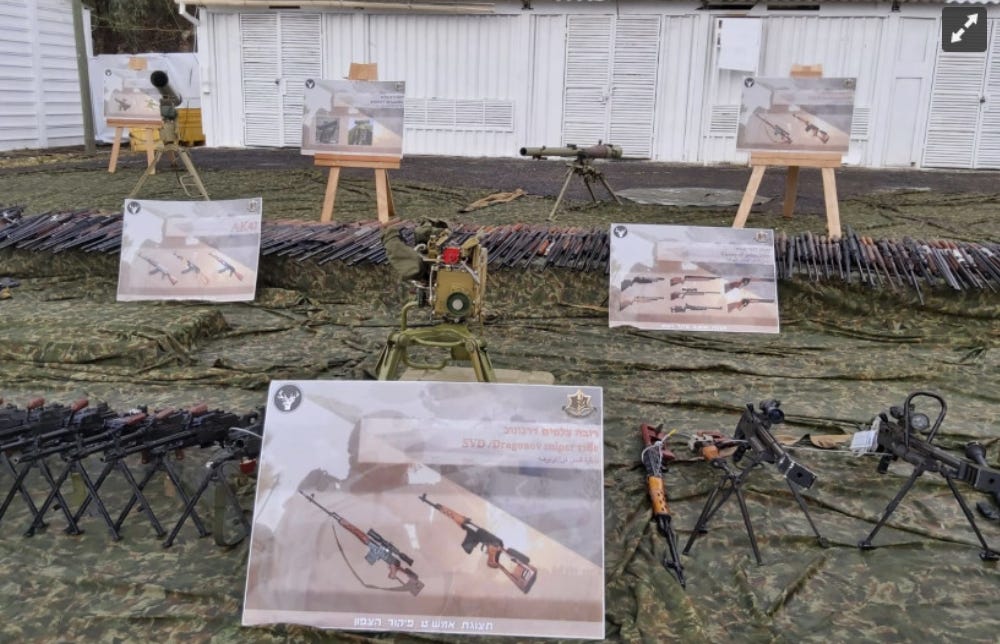
War in Lebanon Saw IDF Seize 85,000 Hezbollah Items From Over 30 Villages—Written by Yonah Jeremy Bob for the Jerusalem Post—December 25, 2024
Hezbollah’s Plot to Down an Israeli Plane: The Tactics That Foiled Their Master Plan—Written by Yoav Zitun for Ynet News—December 28, 2024

Scoop: Biden Discussed Plans to Strike Iran Nuclear Sites if Tehran Speeds Toward Bomb—Written by Barak Ravid for Axios—January 2, 2025
China Arming Houthi Rebels in Yemen in Exchange For Unimpeded Red Sea Passage—Flash Brief for The Foundation for Defense of Democracies—January 2, 2025
Soldiers Stationed on Mount Hermon Face Dangerous Conditions—Written by Yoav Zitun for Ynet News—December 30, 2024

Deadly Affairs: How Fuad Shukr's Four Extramarital Relationships Led to His Elimination - Report—Written by the Jerusalem Post Staff for the Jerusalem Post—December 30, 2024
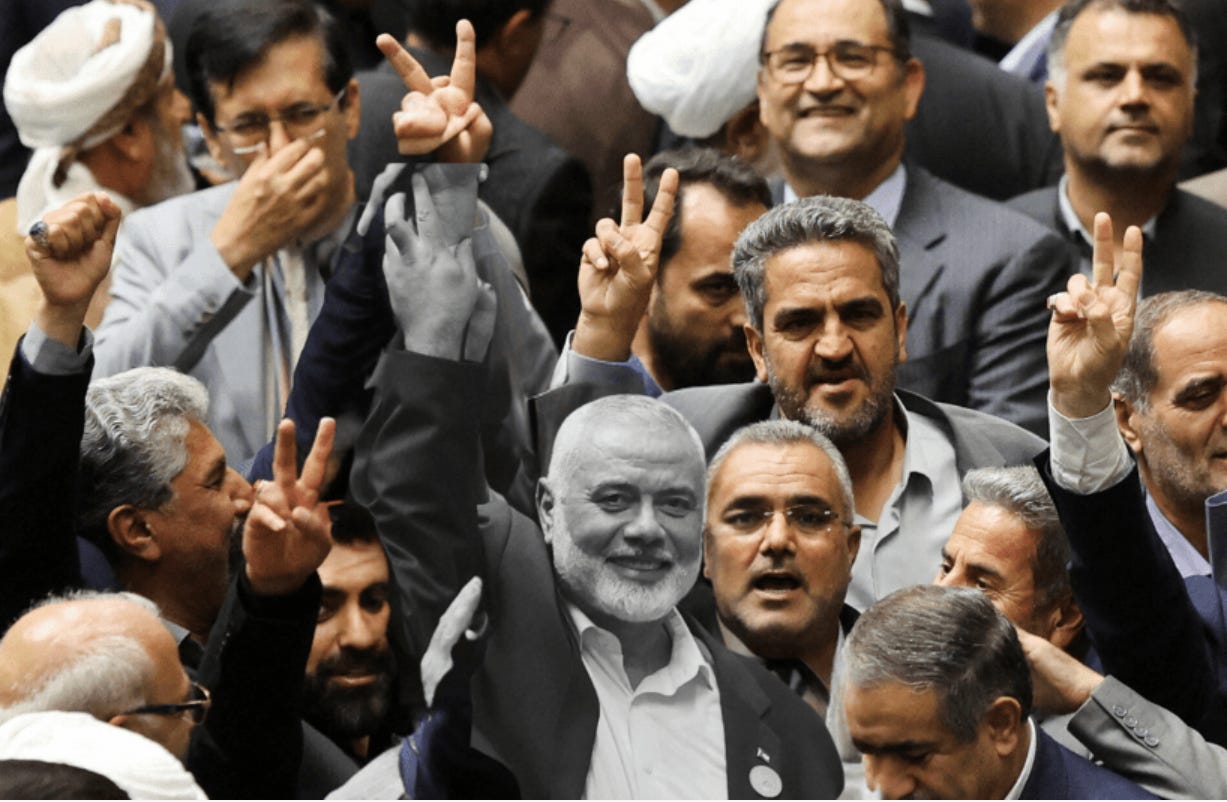
Man on the Inside? Details of Haniyeh Assassination in the Heart of Tehran Revealed—Written by Mathilda Heller for the Jerusalem Post—December 29, 2024
The Curious Case of Iran’s Destroyed Nuclear Site—Written by Andrea Stricker for The Foundation for Defense of Democracies—December 25, 2024
A visit to My Shattered Home in Northern Israel—Written by Eliyahu Galil/Makor Rishon for Israel Hayom—December 15, 2024
The Last Man in Metula—Written by Maayan Hoffman for The Medialine—December 12, 2024
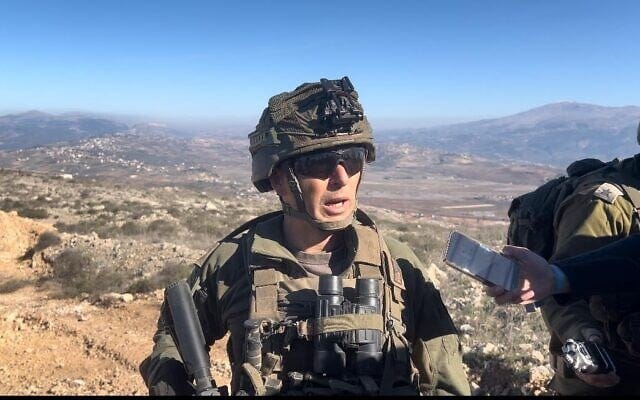
As Northern Israel Comes Back to Life, Hezbollah Strongholds Over the Border Lie in Ruins—Written by Lazar Berman for the TImes of Israel—December 16, 2024
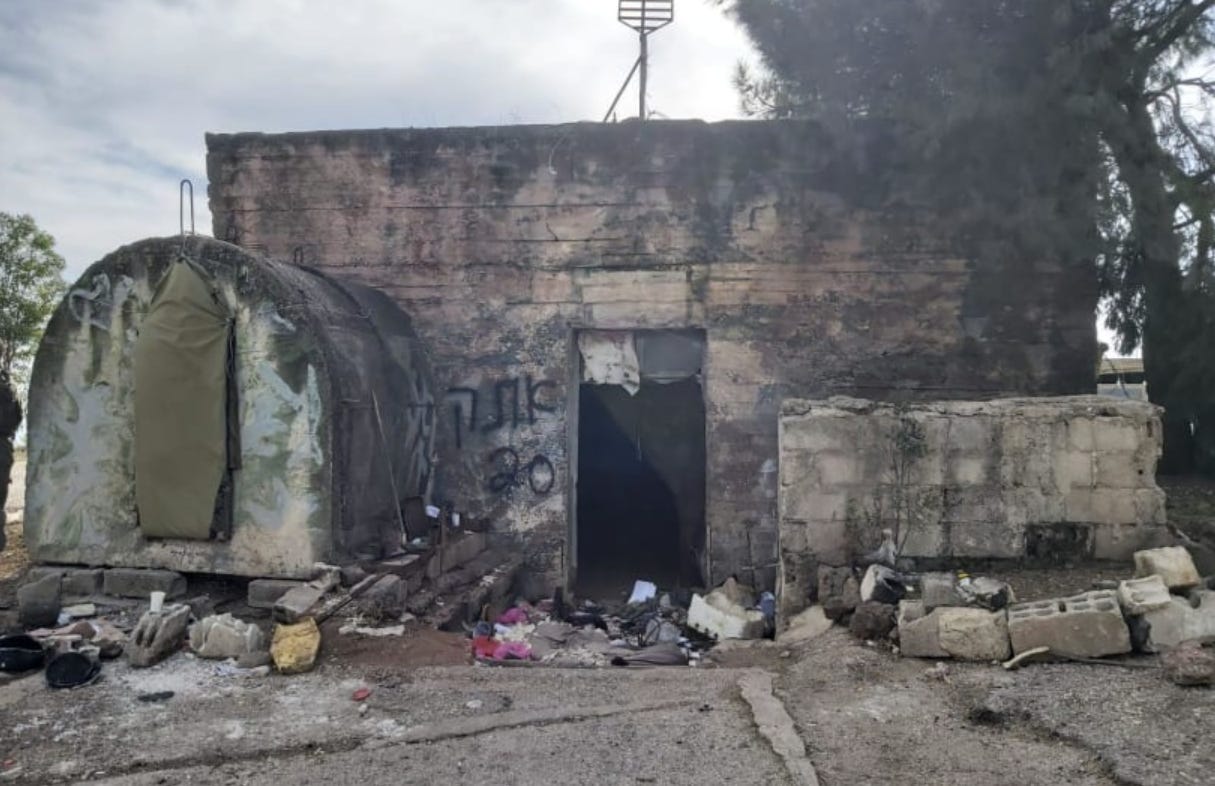
'I Thought Gaza, Lebanon, Jenin Were Exciting – Then I Went to Syria'—Written by Yonah Jeremy Bob for the Jerusalem Post—December 28, 2024
Israel’s Struggle with Hezbollah—A War Without End is now available in eBook and hardback format on Amazon and IngramSpark. This compelling narrative explores Hezbollah’s origins and cancerous growth, traces Israel’s response, and reveals Israel’s present readiness to meet Hezbollah’s challenge.
Cliff Sobin
Important Link—Alma Research and Education Center: Understanding the Security Challenges on Israel’s Northern Border

